
Sunday - July 30, 2009
Curated by Christof Migone
Presented in partnership with the Port Credit Village Project
OFF-SITE LOCATION
55 Port Street East (at Lakeshore Rd. E and Hurontario St.)
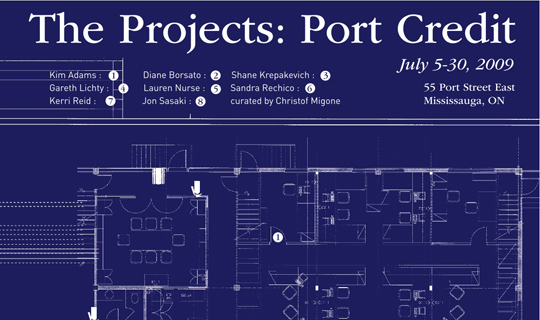
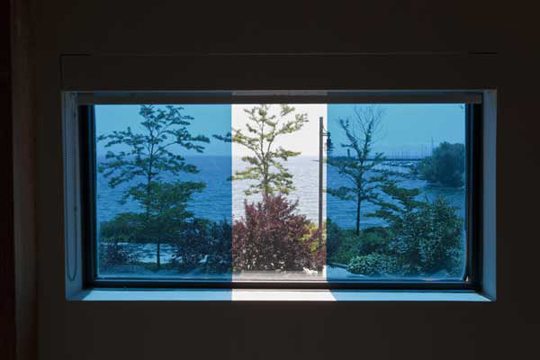
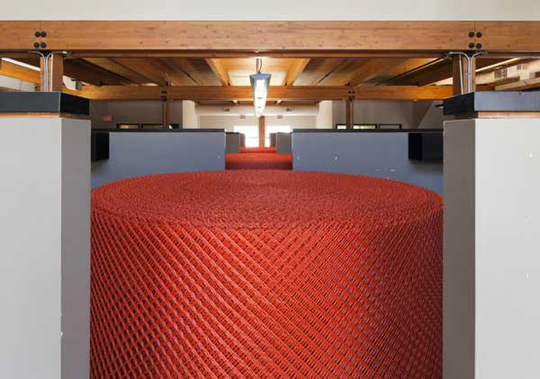
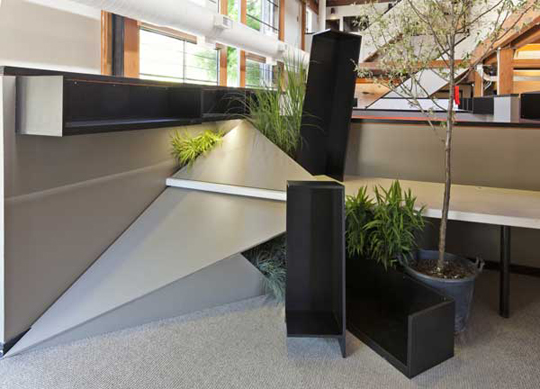

FREE Contemporary Art Bus Tour: Sunday July 12th, 11:30am to 5pm
Starting with a tour of the Justina M. Barnicke Gallery (Hart House) at 11:30am, the bus will depart at noon for the Blackwood Gallery at Port Credit, Art Gallery of Mississauga and the Gendai Gallery at the Japanese Canadian Cultural Centre. To reserve a seat, call the Blackwood Gallery at (905)828-3789 by Friday July 10th.
ARTbus: Sunday July 26th, 11:30am to 5:30pm
Tour departs 11:30am from the Gladstone Hotel (1214 Queen St. W.) to Oakville Galleries, Blackwood Gallery at Port Credit and Art Gallery of Mississauga. Snacks and refreshments will be provided. Cost: $10.
The Projects: Port Credit, is a pilot initiative of the Blackwood Gallery in partnership with the Port Credit Village Project, a local community group. Based at the University of Toronto Mississauga, this is the Blackwood Gallery's first off-site exhibition.
The Projects: Port Credit is an exhibition which accents the proposal or propositional stage of an artwork (what might or could happen). A proposal introduces, triggers, enables. It functions as a meeting point in a predictive discussion of the future of a place. While the standard characteristics of a proposal are to highlight feasibility, possibility and potentiality, the proposals featured in The Projects also dialogue with the absurd and flirt with the impossible and the utopic. The eight invited artists provide a perspective on the socio-economic engines of an area undergoing rapid transformations. These perspectives on Port Credit are simultaneously critical and creative, generative and imaginative. They take the form of posters, maquettes, installations and performative interventions. Some address social and political issues frontally, others obliquely. All are thoughtful and informative while remaining playful and whimsical. They will be scattered throughout the former offices of an architectural firm, amidst the cubicles and desks, resembling the concoctions of architects gone awry.
The Projects: Port Credit, is a pilot initiative of the Blackwood Gallery in partnership with the Port Credit Village Project, a local community group. Based at the University of Toronto Mississauga, this is the Blackwood Gallery's first off-site exhibition.
The original Artist Colony (Phase 1) came about as a response to the conditions of artists moving from the downtown core. It is a utopian commission. Made up from railways and industrial transportation systems, the design is based on a burgeoning urban landscape. Stacked box cars are converted into artists’ studios, entertainment centres, shopping and amusement parks, which make up a contained universe in the style of high-rise architecture set on wheels to travel between city centers. The second phase has its home-base in Port Credit. Housed in one of the offices of a recently vacated architects’ firm, one can glimpse through the window of an office door a model for a development in process—an architect at work. The Artist Colony (Phase 2): Project Port Credit, will be an art and cultural centre on wheels which can move out from its core in all directions.
Kim Adams currently lives in rural Ontario. He is a "process-oriented" artist
who manipulates pop cultural artefacts, i.e. found objects to create miniature worlds and buildings. This internationally known contemporary Canadianartist manufactures inexplicable structures often influenced by architectural accidents. He has shown his work nationally and
internationally since 1978.
http://www.wynicktuckgallery.ca/artists/adams.html
For The Projects, Diane Borsato has created eleven drawings which make proposals for the Port Credit area. While some suggest text-based installations at the marina, or the presentation of a live concert by The Hidden Cameras in the Rhododendron Gardens, other drawings suggest absurd or impossible new programs for the region. In declarative capitals, the impulsive sketches propose everything from SWANS WILL BE TREATED LIKE BIRDS, to MUSIC TEACHERS WILL RECEIVE FREE MEAT, and THE LAKE WILL BE CLEANED ENTIRELY. While many of the works are not intended to be realized, the drawings will be on display for audience members to consider the limits of public art, the rationale of the proposals, and to imagine their diverse possible implications.
Diane Borsato is a visual artist working in performance, intervention, video, installation, and photography. She has exhibited in galleries and museums across Canada and internationally. She was the 2008 winner of the prestigious Victor Martyn Lynch-Staunton Award for outstanding artistic achievement at the mid-career level from the Canada Council for the Arts. She is currently Assistant Professor of Interdisciplinary Studio at the University of Guelph, and lives in Toronto.
http://www.dianeborsato.net/
Starting from the fortuitous find of a commercially available ‘Port Credit’ paint swatch, Proposal Towards an Architecture of Sleeping at the Office Last Night or Forever imagines the remaining pieces of an unusual housing development strategy. Using the exhibition site’s former use as an architecture office as latent material, this work collapses the planning and design of living spaces with lived space itself. The joining of a necessary and an improvised housing situation with a proposal for its wide distribution muddies the usual separation of individual making from large-scale development. A replication of the original living space as a prototype for mass-implementation exemplifies this purposeful complication while also considering the trace and accommodation of individual motivations, needs and desires in formalized design. It is in light of these considerations that my pervasive use of ‘Port Credit’ blue acts as a fluid placeholder in this work, reflecting the complex relationship between people, their living spaces and surrounding municipalities.
Shane Krepakevich completed a BSc. in Geology at the University of Alberta in 2001 but has since dedicated his time to practicing as an artist and musician, primarily in Alberta. As a musician, Shane has been active as a free improviser and a composer with his works performed in Alberta, Saskatchewan, New Brunswick, The United States, Poland and Germany. As an artist, Shane has exhibited drawings and installations in Alberta and Ontario. He currently lives in Guelph where he is pursuing a Master of Fine Arts at the University of Guelph.
http://www.skrepakevich.wordpress.com
For The Projects, Gareth Lichty presents Hamper, an investigation into the constant renewal of commercial office spaces. At once familiar and strange, Hamper is made up of three cylinders of rolled safety orange-coloured construction fence. Lined up within three commercial office cubicles, Hamper cuts off the free circulation of movement, capturing sight lines across the space, and directing the viewer’s gaze towards the lake. The sculptures, if unrolled flat, would cover the total surface area of a football field, but could also be used to create a fence five kilometers long. Playing with how construction fence acts more like a symbolic barrier than an actual barrier to a site, Lichty subtly repurposes this common material to activate the space, reinforcing its total mass on a grand scale.
Gareth Lichty studied Fine Arts at York University in Toronto and Sculpture at Leeds University in England. He has exhibited internationally and nationally with exhibitions in Europe, New Zealand and Canada. Lichty has been a Director and the Chair of Programming for CAFKA (Contemporary Art Forum, Kitchener and Area) since 2005. He has received grants from the Canada Council for the Arts and the Ontario Arts Council. Lichty lives and works in Kitchener, Ontario and is represented by Peak Gallery, Toronto.
http://www.garethlichty.com/
I am interested in the idea of systems and efficiency, manifesting in a form that wastes nothing and gathers material to shape itself from what is left behind: a model that slowly builds itself in the abandoned offices of an architects’ firm. Architecture is an expression of geometry as applied to structures—the philosophy of the built form grows out of referential allusions to the systems and patterns found in nature. What if natural forms collected themselves into a geometry? My project references the structure’s history of boatbuilding, its secondary incarnation as an architects’ office, and its proximity to Lake Ontario. These elements combine to create a form that discusses the constructed environment of the building versus its natural surroundings. I am interested in the tension between inside and outside and the intersections that occur when borders become fluid and porous. In this case, the natural colonizes the unnatural and spurs a dialogue between the two, culminating in the grotesque and beautiful. When alluding to the history of this building, I imagine a space that has historically housed the construction of complex forms that were designed as tools for navigating the natural world. My installation is a distillation of that past and addresses the specific locale of the building, its immediate surroundings, and the marine identity of the village of Port Credit.
Lauren Nurse is a transplanted Québecer, living and working in Toronto, Ontario. She recently graduated from York University’s MFA program, with a concentration in print media and installation. She has participated in exhibitions in Toronto, Montreal, New Mexico and Italy, and has completed residency programs at Montréal’s Atelier de L’ile, Atelier Circulaire, the Vermont Studio Center, Newfoundland’s Pouch Cove Foundation and Muskoka’s Tree Museum Sculpture Garden. Her current work explores intersections between real and fictive environments. She teaches Design at Sheridan College, and Print Media at both the Ontario College of Art and Design, and York University. She is currently pursuing a degree in horticulture from Guelph University, and is working on an upcoming solo show at List Gallery in September. She will be creating an installation in MADE Design’s project room for the months of July and August 2009.
http://laurennurse.com/
In 1965, the Altons of Port Credit built a playhouse for their children, which over time accumulated a puppet theatre with many puppets, an easel and chalkboard, a couple of small desks and a trunk with dress-up clothes. The playhouse became a location for spontaneous play not only for their children but also for others in the neighbourhood. By all accounts up to 100 kids per week came to play games or use their imagination in the playhouse. In 1976, the City of Mississauga, took over the property with the aim of making it into a public park (then Cranberry Cove, now Rhododendron Gardens). The impromptu games and parties near the lake stopped. I want to start them up again (or at least remind people of their existence). To that end, a scale model of the playhouse will be displayed in the exhibition to tell of recent history and propose the possibility of re-creating a playhouse for today.
Sandra Rechico is a Toronto artist whose work investigates urban space through maps. Her work has been exhibited across Canada and abroad. Her exhibitions have been featured in numerous publications and she has participated in a number of international residencies. She has also co-curated WADE, a city-wide art event in Toronto’s wading pools with Christie Pearson. Rechico is an Assistant Professor at the University of Guelph.
http://www.uoguelph.ca/sofam/cv_rechico.html
A couple of years ago I came across a piece of a broken cinder block by the side of the road. After several failed attempts to contact various cinder block manufacturers to see if they could incorporate this found broken piece into the body of a new cinder block, I have now decided to take matters into my own hands and fix it myself. For The Projects, I will be fixing the original piece and leaving it somewhere in Port Credit, as well as offering a free repair service for anyone from Port Credit who has a cinder block in need of repair.
Kerri Reid is a visual artist currently based in Toronto, where she teaches at the Toronto School of Art. Born and raised in Vancouver, she studied at the Emily Carr Institute of Art and Design and the University of Guelph. Her recent work involves a series of restorative gestures with discarded mundane objects and can include dust, wicker, ceramics, drawing, photography, woodwork, painting, and faxing, as well as interactions with the free curbside economy, Craigslist, and Ebay. She has exhibited in both group and solo shows throughout Canada and recently participated in a residency at the Vermont Studio Center.
http://www.kerrireid.com
I have a weak spot for grand romantic gestures. Although they currently manifest themselves in videos, performances, objects and photos, I was at one time an ‘en plein air’ landscape painter. As of late I have been asking myself why I have been so secretive of this fact. There is possibly no romantic image more iconic than the solitary artist outdoors, struggling to arrange pigmented oil into the semblance of a natural vista. It fits, and those were happy days. But over the years I have lost faith in the ability of my little painted panels to communicate relevant messages to the world. When I recently retrieved these old paintings from my basement storage locker, I lamented that my jaded eyes couldn’t “see” them anymore, so to speak. My cynicism now prevents me from accessing work that once gave me so much pleasure. I no longer have my old conviction or for that matter the technical skill. I fear these things are probably lost. Yet, despite that foreknowledge, (and in the tradition of hopeless romantic quests,) I will try this summer to reclaim them. I will be a “painter in residence” periodically throughout June and July, executing landscape paintings on site at various locations in Port Credit. I will bring my old painting box, my brushes and panels, and I will try to recover the uncritical appreciation for this genre of painting that I have lost.
Jon Sasaki's practice of "romantic conceptualism" incorporates film,
objects, performance-for-video, installations/ interventions and so on. His
time-based work has been presented at the Oberhausen International Short
Film Festival, the Blackwood Gallery, The Aurora Picture Show, (Houston, TX)
and CAFKA (Contemporary Art Forum, Kitchener and Area). He has completed
projects for C-Magazine, Art Metropole editions, the Art Gallery of
Ontario‚s Massive Party event, and the Playlist Thursday event series at the
Power Plant Contemporary Art Gallery, Toronto. Solo exhibitions include
Gallery TPW, Toronto, The New Gallery, Calgary, and (upcoming) Latitude 53,
Edmonton. Sasaki has participated in recent group exhibitions at Susan Hobbs
Gallery, the Justina M. Barnicke Gallery, the Owens Art Gallery (Mount
Allison University, Sackville, NB) Simon Fraser University Gallery, Jessica
Bradley Art+Projects, the Koffler Gallery, as well as the 2006 and 2008
editions of Scotiabank‚s Nuit Blanche. Jon was an active member of the
Instant Coffee art collective between 2002 and 2007. He is on the
programming committee and staff of the Mercer Union Centre for Contemporary
Art. Jon is the proud owner of one of the world‚s largest collections of
"keys to the city." He currently lives and works in Toronto, although he has
yet to acquire a key for that particular city.
http://www.jonsasaki.com/
In the mid 1970s, Claude, one of my university housemates in Sackville, New Brunswick, planned to travel across Canada at the end of term before he went back home to France. He wanted to visit large cities — Montreal, Toronto, Winnipeg and Vancouver — and get to know the hometowns of his three housemates. I grew up in Port Credit, Ontario, and our other two housemates in Fredericton, New Brunswick, and Kingston, Ontario. Claude’s enthusiasm for visiting his new friends’ places of origin had limits: the smaller centres should have some point of interest. To check on this, Claude had the Michelin Guide to Canada, the authoritative and rather dry French travel publication that offered a brief outline of each town, city and region, and pointed out anything worth visiting, with an emphasis on art and architecture. A system of stars, three being the highest distinction, recognized noteworthy attractions.
Port Credit had no stars. The guide noted that the town, located on the shore of Lake Ontario just west of Toronto at the mouth of the Credit River, was home to two manufacturing and industrial concerns — the St. Lawrence Corn Starch Company and the Texaco Refinery — neither of which, the guide flatly stated, would be of any interest to a tourist. Fredericton and Kingston fared much better; each had a star. Claude opted not to visit Port Credit.
I was miffed. Port Credit, a paradigm of small-town, mid-century North America, was surely worth at least a half-day stopover. Founded in 1889, the Starch Works (as the Corn Starch Company was popularly called) was small-town manufacturing writ large. Raw materials arrived and processed goods departed, first by wagon team, and later by rail and tractor-trailer, all of which sported the Starch Works’ distinctive namemark. Great volumes of food staples were created: laundry and cooking starch, corn oil and that ubiquitous, if often hidden food sweetener, corn syrup. All this starch, oil and glucose syrup was produced in an imposing and sooty number of brick factory buildings with many, many domestically scaled sash windows that inexplicably always seemed to be dark. A forest bordered the factory to the east. Seven times a day, the factory steam whistle would sound throughout the town to let the workers know when to wake-up, start work, have lunch, and so on. All of us in the town orchestrated our day by the whistle.
The Starch Works was managed by successive generations of the Gray family, and in the midst of the Great Depression, rather than lay-off the company’s workers, then president William T. Gray employed his workers to build the Factory Office on Lakeshore Road at Hurontario Street.[fig. 1] The 1930s building is an ornamental brick building with a prominent central doorway with a transom window above filled with their namemark, handlettered in gold leaf. Surrounded by ornamental wrought iron, the lettering would reflect the ambient light and hauntingly glint out at you as you walked by.[fig. 2]The company’s smokestack was a key landmark to mariners on the lake. But the Starch Works' greatest visibility was achieved through their NHL hockey card promotion: from 1943 through 1967, consumers could mail in proof-of-purchase labels to the company and receive black-and-white photo portraits of current players in the league. This highly successful food promotion campaign resulted in “a major sales boost for the company’s products” — particularly to its popular Bee Hive Corn Syrup.(1)
Further west of the Starch Works on Lakeshore Road at Stavebank Road, Texaco purchased an existing oil refinery in 1959. From 1932 on, a succession of owners had maintained a refinery on the waterfront site of a nineteenth-century brickworks.(2) The refinery employed fewer townspeople than the Starch Works and presented a nearly bucolic aspect to passers-by. Row upon row of pristine white oil storage tanks occupied a vast field of trimmed grass; and, each of the tanks sat on its own manicured hillock. Every tank had a reference number ever so neatly painted near the top. This parkland of monoliths sat behind a tall chainlink fence, and in the distance the refinery fires burned high in the air, night and day. From Lakeshore Road, the field of storage tanks’ order and accountability set against the refinery’s distant flames presented a striking if contradictory image.
In the 1920s, European architects such as Erich Mendelsohn and Bruno Taut travelled to Buffalo, New York, to see the pared-down purposefulness of the city’s lakeside grain silos. Industrial buildings such as these held great fascination for the early European modernists, supporting the architects’ dedication to simple geometric forms and monumentality.(3) But by the 1970s, Düsseldorf artists Hilla and Bernd Becher’s documentary photographs of the German industrial landscape had become well known. I’m not entirely certain that oil storage tanks in France familiar to my friend Claude would have differed greatly from the tanks in Port Credit, but as a child I found in the refinery site a kind of reassuring simplicity of purpose. The place was more ideal model than actual thing.
In 1999, Canadian photographer Edward Burtynsky photographed another refinery on Lakeshore Road in nearby Oakville, just west of Port Credit. Burtynsky’s images depict the Oakville Refinery’s intricate network of pipes, ducting and valves as rational, stainless steel order glistening in the midday light. Given Burtynsky’s environmental activism, the artist no doubt intended subtle critique. But his photographs (now in the collection of Oakville Galleries), could well be seen as presenting industry in a utopian manner, much as I perceived the Port Credit facility — sans irony — many years ago.
Most of us have a fond attachment to our hometowns or regions, and often that attachment has some measure of nostalgia and not a great deal of objectivity. Certainly, much of what I valued in Port Credit as a resident would have been lost on a first-time visitor. There was little concern for the production of tourism in Port Credit even into the 70s; there was employment and a satisfied insularity that comes of self-sufficiency. Port Credit was then and will forever be in the shadow of the region’s far greater attraction, Toronto.
Beyond a travel guide’s snapshot view of Port Credit as an industrial centre, the town was defined by numerous other, much smaller, commercial ventures. In 1950, the eastern side of Port Credit beyond the Starch Works and south of the Lakeshore Road was largely residential with only the odd commercial building on the Lakeshore. The two apartment buildings (between Oakwood Avenue North and Woodlawn Avenue on the north side of the Lakeshore) with the beautiful, eccentric concrete entrances in the form of two intertwining tree trunks hadn’t been built yet.[fig. 3 & 4] North of Lakeshore Road was largely fields and woodlots.
In 1950, the Maxted Pharmacy building on the southwest corner of Lakeshore and Hiawatha Parkway was just being built, and Henry’s Hardware (later, and for many years, Ventresca’s Supermarket) on the southeast corner of the same intersection was also under construction. Reg and Mary Marshall had already established Marshall’s Sport and Gift, in the middle of the block bracketed by the Village and Maxted Pharmacies. On the northwest corner of Lakeshore and Briarwood Avenue was the home and office of Doctor Brayley whose name may now be found on the three-story Brayley Building office complex built on that site in the 1960s. There was no commercial development between Cumberland Drive and the St. Lawrence Starch Works to the west at all. Paul Velano’s Flame Steak House, the area’s fine dining mecca throughout the 1960s and 70s, was years away.
In 1950, my father opened up a jewellery and watch repair business, some two and a half blocks east of the Starch Works on the corner of Lakeshore Road and Cumberland Drive. The store was located in the then-newly constructed Village Pharmacy building in a small retail space originally slated to become a barbershop. His business motto was “C. Cliff Armstrong for Watch Repair.” My father’s first name, which he didn’t like to use, was Charles.
My father’s journey to retail and watchmaking in Port Credit mirrored the post-war population shift from the inner city to growing suburban centres. Like many World War II veterans, he left the forces young, married, and found he had no immediately marketable skills. Following up on a childhood passion for building model airplanes, he passed an aptitude test and completed a one-year intensive course in horology (watch repair) offered to veterans at the Gould Street Rehab School in Toronto. Following graduation, he worked for the Toronto department store Simpsons for three years as a watchmaker. He didn’t feel that conditions at Simpsons were overly unpleasant, but described the warehouse on Toronto’s Temperance Street in which he and six other watchmakers worked on a quota basis as being dusty and having windows so grimy you couldn’t see out of them. He dreamed of opening up his own business.
Father first heard of Port Credit’s developing commercial district from a family friend and building inspector for Toronto Township, the regional government that preceded the creation of Mississauga in 1968. On his first visit to Port Credit, Father met Laurie Purdy who was about to open the Village Pharmacy in a newly completed building. (Ron Purdy, Laurie’s son — and longtime community icon and humourist — retired and sold the pharmacy to Joseph Bahrani in 1993.) Armstrong Jewellers opened in October 1950, with a stock of watches, diamonds, jewellery and silverware.[Fig. 5] The focus of the business, however, was watch repair. To celebrate the opening, Father ran a contest to give away a ‘ladies’ and a ‘gents’ watch. He wound the watch up and gave it to the manager of the local Bank of Commerce for safekeeping. Contestants had to predict when the watch would stop — down to the hour, minute and second. A Port Credit businessperson won the contest.[Fig. 6]
By 1952, Armstrong Jewellers had outgrown the modest Cumberland Drive location, and the store moved half a block east into the building that Mel and Gwen Stewart of Stewart’s Hardware had just built. The Stewarts then lived in an apartment above the Village Pharmacy. Initially, Armstrong Jewellers shared its half of the Stewart Building with Able Cleaners (who soon moved several stores east); the jewellery store then expanded to assume the proportions it would keep until 1979. My father’s 1950s renovation of the store included the installation of a custom-built wall and ceiling maple showcases, an aluminium store front with a floor-to-ceiling picture window, a smaller eye-level showcase window, and a store-wide illuminated sign that was ordered at the same time as a matching sign for Stewart’s Hardware. Each week, the windows were cleaned and the floors polished to a high shine.
Living in the ground-floor apartment behind the store, Father ran the business with my mother Lois until the arrival of their first child in 1956 when Do Humphreys was hired as the store’s assistant manager. As the business grew, Armstrong hired Port Credit residents Ethel Brown and Doris Spencer as sales clerks, and another watchmaker was employed. Business was brisk. Every spring and fall Humphreys and Armstrong went to the Toronto Gift Show to order the store’s stock which came to include Bulova watches, Bluebird Diamonds, Royal Doulton figurines, Cornflower glassware, Cross and Olive crystal, Dominion luggage, and tides of costume jewellery displayed on an oval island that occupied the centre of the store. Throughout the store’s 1950s and 60s heyday, many trends in giftware came and went: charm bracelets, serving trays made of cheery fibreglassed cotton prints with the inevitable daisy or happy-face designs, Danish Modern teak monkeys, and handtooled leather encosed lighters. One anniversary happily followed the next.
Father served as an elder of the Port Credit First United Church for 22 years and was a charter member of the Port Credit Rotary Club (1952) which started out meeting in the United church’s auditorium with meals cooked by the church’s Women’s Auxiliary. The club’s first fundraising goal was to equip the operating room in the new South Peel (now Mississauga) Hospital. And, of course, the store sponsored a juniors’ hockey team that first played in the Dixie Arena and later in the newly-built Port Credit Arena.
By the end of the 60s, traffic was slowing in Port Credit retail businesses: Dixie Plaza and then Applewood Plaza had opened, to be followed in the 70s by the Sherway Gardens and Square One indoor malls. But the most severe blow to my father’s store was a 1978 armed robbery. At 10 a.m. one October morning, a man entered the store carrying a knife; he bound and gagged Father, and left him in the back office while calmly serving customers whho arrived during the theft. The bandit took the store’s watches and gemstone jewellery and fled to a car waiting in the alley and driven by an accomplice. The following May, the bandit was apprehended, but by that time he had fenced everything. For security, larger jewellery-store chains hire professional guards; it is seldom that smaller stores are able to afford the prohibitively high cost of theft insurance. Father was not insured; his loss was so great that he was unable to restock the store. In the year immediately following the theft, he feared for his life every time the door opened. Father sold the business in 1979. After a month’s holiday, he once again rented the small store he started out in on Cumberland Drive in 1950. From then until 2000, he concentrated solely on watch repairs.
With the advent of transistorized timepieces, mechanical watch and clock repair has become both boutique skill and dying art. George Brown College in Toronto was the last college to teach watchmaking in Ontario: and it no longer receives enough applicants to run its longstanding horology program. Father’s generation of watchmakers felt it was the trade’s last. In 2000, Armstrong Jewellers celebrated its 50th anniversary — and my father retired. His old store on the Lakeshore is now a bridal boutique.
The St. Lawrence Starch Company was sold in 1989 to Cargill, an American food, agriculture and financial services corporation, and, following the Canada-United States free-trade agreement of early 1989, the company was moved to the US.(4) After 100 years of production, the Starch Works closed in 1990, and most of the factory complex was demolished in 1993 to make way for a relatively low-density, upmarket development of storefront live-work units, condo townhouses, waterfront townhouses and lakeside parkland spread over 16 acres. The development was sensitive and even to a degree green: sightlines were preserved to the waterfront from Lakeshore Road, the factories’ concrete foundation material was crushed and used for new roadbeds, and a good portion of the original forest on the north-east edge of the property was maintained. Project developers Fram Building Group have kept one of the original buildings, the 1930s Factory Office, to serve as its international headquarters.(5) And the Starch Works’ steam whistle — an innocuous structure — is mounted atop a lamppost on the publicly accessible Waterfront Trail that goes through the old factory property.
The Texaco Refinery operated in Port Credit until 1985 at which point the facility was relocated to Nanticoke on Lake Erie. Imperial Oil acquired Texaco’s properties five years later and sought Ministry of the Environment approval to bring in new soil to revitalize the Port Credit brownfield site for reuse. This work was terminated when it became clear that liability for the closure of brownfield sites is not legally settled in Ontario.(6) The sizeable 140-acre property sits vacant and overgrown as Imperial Oil continues to “manage and monitor” the refinery site.(7) [Fig. 7 & 8]
Despite the town’s reluctance, Port Credit was incorporated into the City Mississauga in 1974. Today, even though the town’s retail strip along the Lakeshore still retains its 1950s architectural face, a great deal has changed. Mainstreet retailing has experienced huge competition from strip plazas, mega-malls, and now big box retailers; and social violence has certainly not gone away. In the 1980s and 90s, a number of antique, second-hand shops and bargain shops were established in East Port Credit. There was a venerable precedent for this in Port Credit’s pioneering business in used goods, Ye Olde “X” Shoppe, which was opened in 1952 by Mildred Grebeldinger and later owned by her son Richard, who closed the business in 2002.(8) Most recently, the village is steadily gentrifying with fine restaurants, organic food retailers and art galleries — becoming a bit of a tourist destination. I should let Claude know.
Illustrations:
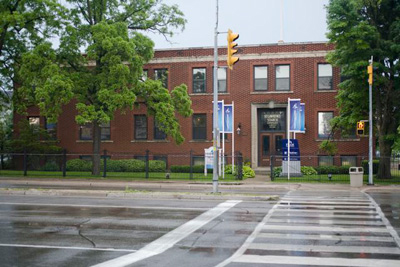
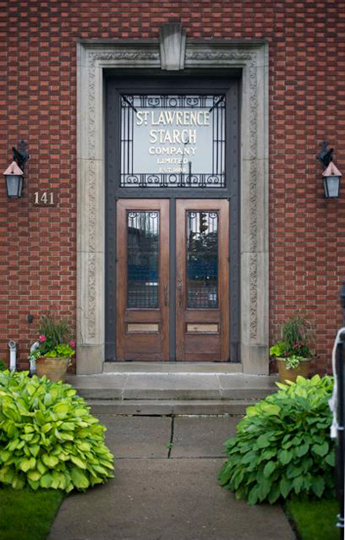
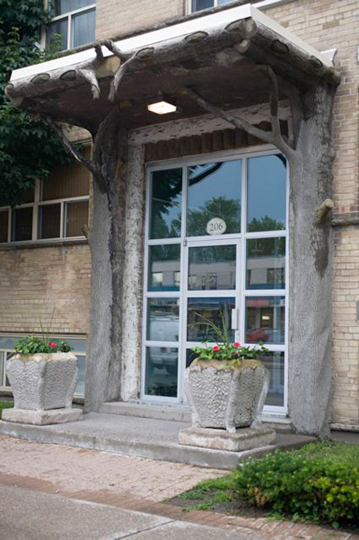


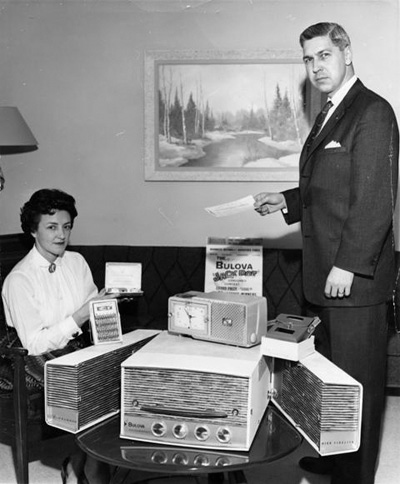

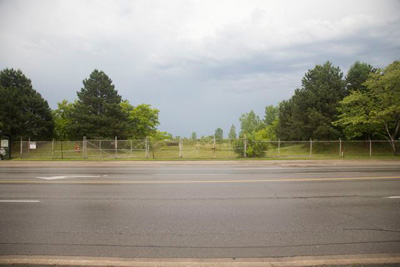
John Armstrong teaches painting in the collaborative Art and Art History Program between Sheridan and the University of Toronto Mississauga.
Generous supported by the Canada Council for the Arts, the Port Credit Village Project, Port Credit Community Foundation, Rubicon Grill and the Ontario Trillium Foundation.
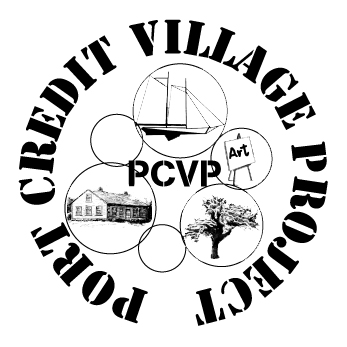



![]()